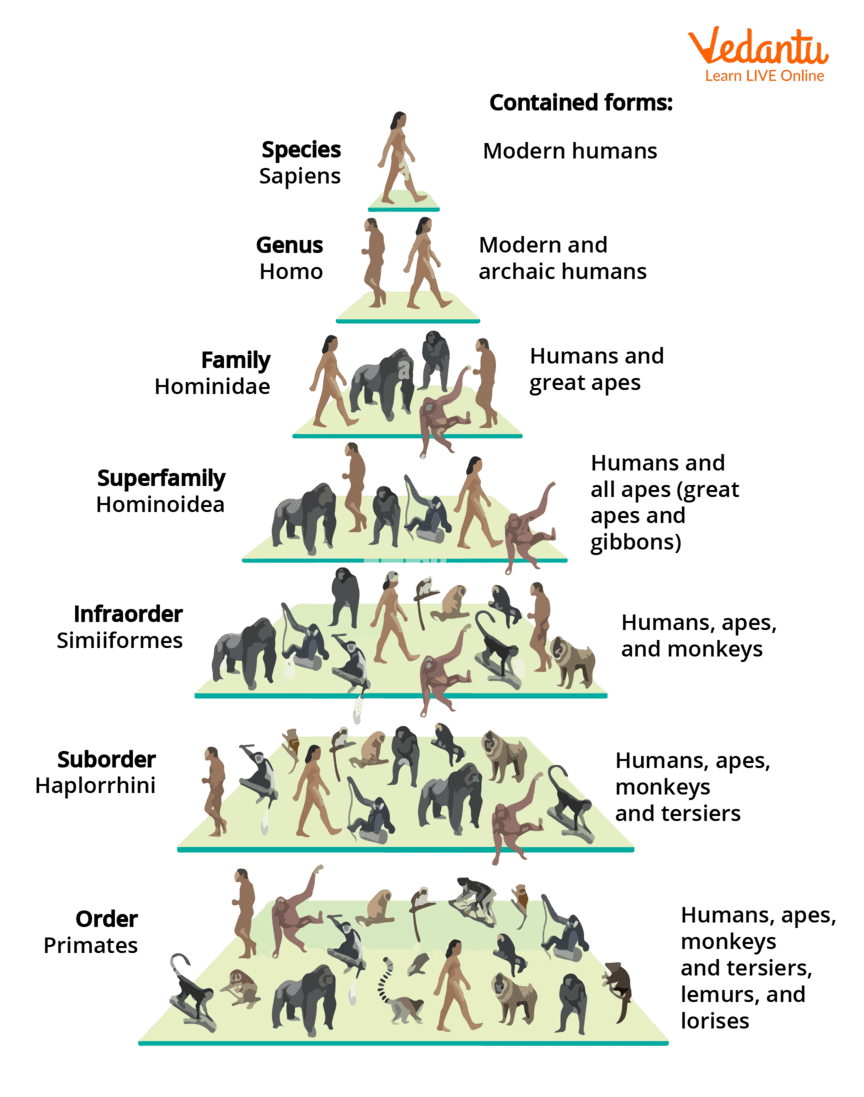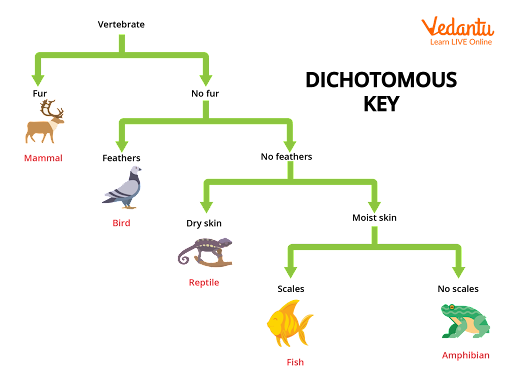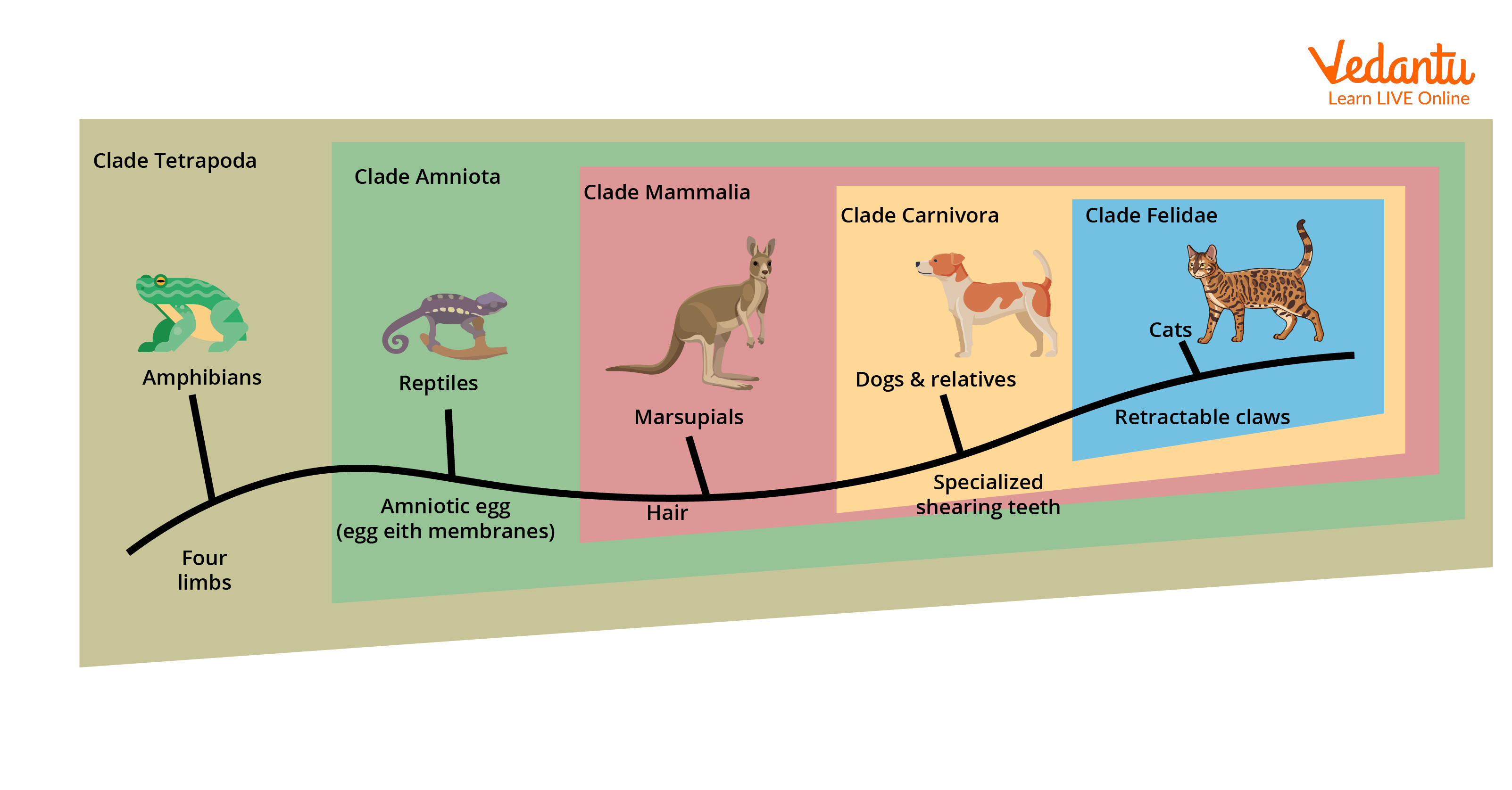




Introduction: Evolution and Classification
Evolution refers to the emergence of complex organisms by “gradual change” from basic ancestral forms over geological time. Classification is vital for understanding and communicating about organisms. Classification is the process of classifying things based on similarities and differences. In this article, the basis of evolution, classification, classification tools, and the relationship between evolution and classification is discussed.
What is Classification and Evolution of Living Organisms?
'Evolvere' means "to unfurl or unroll" in Latin, which indicates "to expose or express latent potentialities." Evolutionary biology is the branch of biology that deals with the term "evolution." Evolution is defined as the act of unfolding or unrolling, and it is an orderly 'transition' from one form to another.
Classification entails recognising similarities and differences between various types of creatures and then grouping similar species together and dissimilar types of organisms together.
Evolution
Charles Darwin was an English naturalist who lived in the 19th century.
He created a theory about how evolution works.
He researched the Galapagos Islands because each island's ecosystem was unique.
He authored a book called The Origin of Species.
Darwin's Theory states that all species evolved from a common ancestor.
Variation is defined as a little variance in an inherited property of individual individuals of a species. It is caused by mutations during sexual reproduction.
Natural Selection "Survival of the Fittest"- Organisms with variants that help them survive, live longer, and, hence, reproduce to pass on those variations.
For example, if the food sources are at a higher height, tortoises with longer necks will live longer than tortoises with short necks.
Adaptations are hereditary characteristics that boost an organism's chances of survival and reproduction in its environment.
Three kinds of adaptations:
Structural Adaptations- They include characteristics such as colouring and form.
Behavioural Adaptations- They refer to how an organism behaves. For example, night hunting and herd movement.
Functional Adaptations- They entail interior body systems. For example, temperature regulation and hibernation.
What is the Basis of Evolution?
There are several bases of evolution.
1. Comparative Anatomy is the study of the similarities and differences between the structures of living organisms.
Homologous Structures: Body parts of organisms that are structurally similar but function differently.
Analogous Structures: Body parts that serve the same purpose but differ in structure. For example, bird and insect wings.
Vestigial Structures: Body parts that have evolved and lost their original purpose. It demonstrates that the structures formerly served a purpose, but are no longer required. For example, cormorant wings, and whale pelvic bones.
2. Molecular Biology
DNA may be used by scientists to determine how closely related organisms are.
Divergence is the separation of an organism from its common ancestor.
3. The Fossil Record
The Fossil Record is a collection of all the fossils ever discovered on Earth. It provides proof that species have evolved over time.
The remnants or evidence of once-living species are referred to as fossils.
Formation of Fossils:
Mineralisation: Minerals in water replace the original substance of the organism and solidify into rock.
Carbonisation: Under tremendous pressure, the organism's liquids and gases evaporate, leaving only the carbon outline.
Moulds and castings: Mould is an organism's imprint in solidified mud or sand, while a cast is a fossilised duplicate of an organism in a rock formed by silt filling in the mould.
Trace fossils are fossilised evidence of an organism's activities, such as footprints.
Original material the original tissues of an organism, such as insects preserved in amber (tree sap).
Classification
Classification is the process of grouping objects based on shared features. There have been several approaches to classifying living things. Aristotle classified all life into two categories: plants and animals.

Classification of Species Homo Sapiens with-in the Order Primates
Linnaeus' System:
Linnaeus established modern taxonomy.
Taxonomy is the study of describing, categorising, and identifying living things.
Based on seven hierarchical categories, he simplified the naming of living things by assigning each species a two-part particular name known as "Binomial nomenclature."
Seven-Hierarchical categories are:
Kingdom
Phylum
Class
Order
Family
Genus
Species
Classification Tools
1. Dichotomous Key
A pairwise arrangement of descriptions can be used to identify an unknown creature. The chosen descriptions lead to another pair of descriptions or to the organism's identification.

Classification Tools: The Dichotomous key
2. Cladograms
These are the basic branching diagrams that indicate the degree of similarity between a group of species. A cladogram is a diagram that shows how different groups of organisms are connected. They make no statements about one animal descended from another.
Evolutionary links support modern classification. It is known as systematics. Cladistics is the categorisation of people based on their common ancestors.
The evolutionary history of a group of species is known as phylogeny. The evidence from current species, the fossil record, and DNA data – are shown using branching tree diagrams.
How to Create a Cladogram:
1. Rank the features to be evaluated in terms of evolutionary complexity.
2. Make a table of who possesses the attributes and who does not.
3. Arrange the qualities down the bottom of the figure, followed by the organisms (when finished, the most advanced creature will be on the top right.)
4. Determine common ancestry along the route to see if a new branch is required or if one organism evolves but does not have new ancestors.

This Cladogram shows a Simplified Phylogeny of the Cat Family.
How are Evolution and Classification interlinked?
Classification is the process of organising organisms into categories based on similarities and differences. Evolution describes the progressive and continual development of previously existent species into existing living organisms. All living beings are identified and classified based on the shape and function of their bodies. As a result, features that emerged earlier are more likely to be fundamental than characteristics that emerged later. This implies that the taxonomy of life forms is inextricably linked to their evolution.
Interesting Facts
Every living thing developed from bacteria that existed billions of years ago.
Biological evolution is thought to have begun roughly 3.7 billion years ago.
Homo sapiens first appeared 250,000 years ago.
Human evolution has taken around 5 million years.
Conclusion
Evolution is defined as any net directional change or cumulative change in the characteristics of organisms or populations over many generations, also known as descent with modification. It expressly includes both the origin and spread of alleles, variants, trait values, or character states. However, classification can be described as the process of classifying things depending on their similarities and differences. This article tells us about the basis of evolution and its characteristics and also shows how both evolution and classification are interlinked.
FAQs on Evolution and Classification - NEET Important Topic
1. What is Binomial Nomenclature?
Based on seven hierarchical categories, Linnaeus simplified the naming of living things by assigning each species a two-part particular name known as "Binomial nomenclature."
Felis Domesticus- Felis represents Genus, whereas domesticus denotes species.
The first portion of a scientific name is the genus of the organism. Similar species are placed together in a single genus. For example: Felis
The second half of the term indicates the species, which is a collection of organisms with comparable characteristics and the ability to create viable offspring. For example: domesticus.
2. What is Taxonomy?
Taxonomy can be described as the study of classifying creatures according to particular standards. Early taxonomists categorised species solely based on their morphological characteristics. Taxonomists began to draw evolutionary links between various types of species when the notion of organic evolution was established. This was referred to as systematics. Taxonomy and systematics are now considered synonymous, because for categorisation, morphological and biochemical similarities, as well as those between molecules such as DNA and RNA, are explored to demonstrate evolutionary links.
3. Why is classification essential in evolution?
Classification is required for the study of living beings to be effective. It is necessary to understand the many types of organisms. It aids in the accurate identification of numerous species. It is beneficial to understand the origins and evolution of organisms. It aids in determining the exact place of the organism in the classification. As organisms are often classified based on their distinguishing characteristics. An organism's classification typically gives significant information about its evolutionary history and which other organisms are connected to it.
















